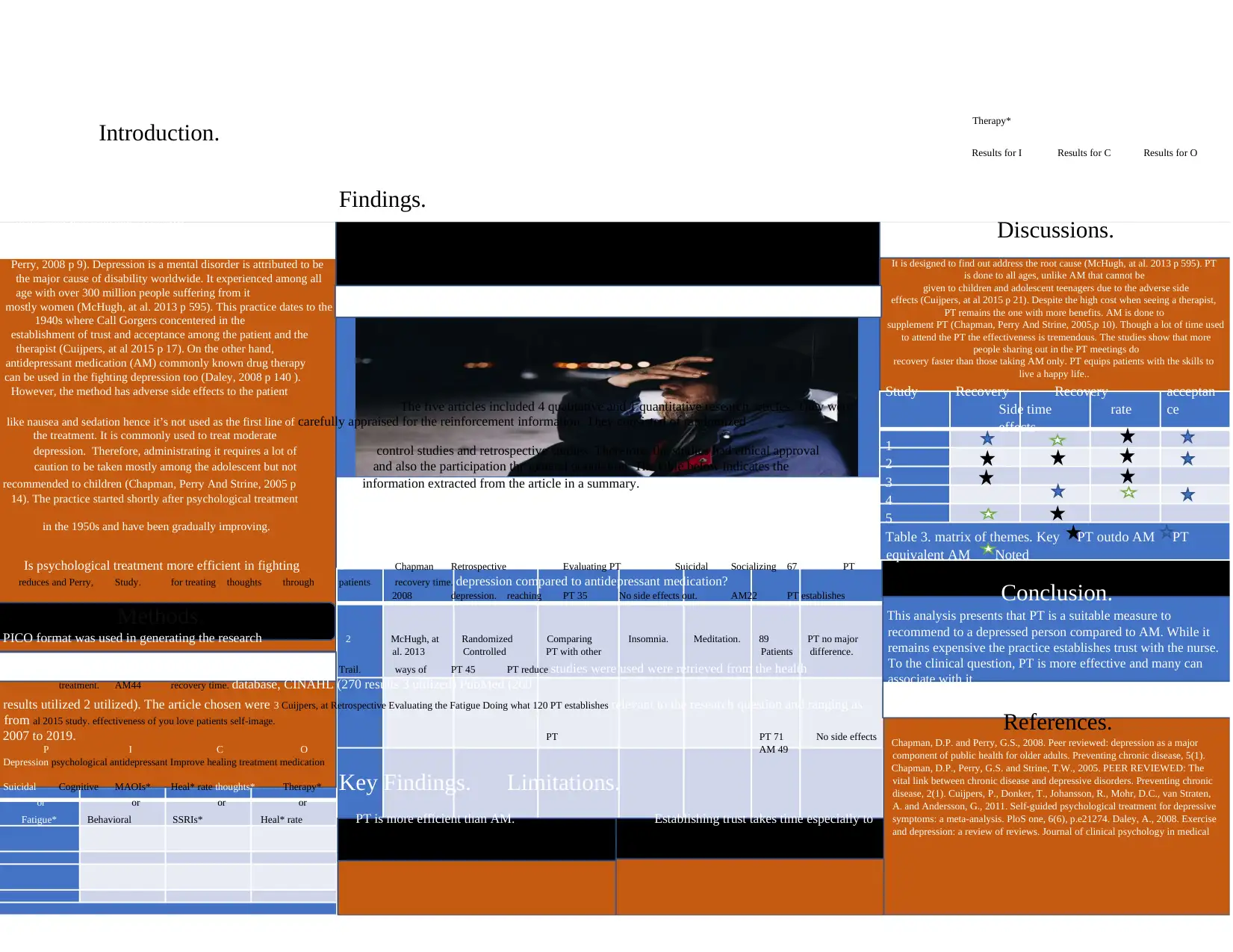NUR131: Comparative Analysis of Depression Treatments and Outcomes
VerifiedAdded on 2022/10/09
|2
|1048
|6
Report
AI Summary
This report presents an analysis of psychological treatments (PT) for depression, contrasting them with antidepressant medication (AM). The study, based on a review of five articles, including both qualitative and quantitative research, explores the efficacy of PT in addressing depression. The report highlights the historical context of PT, its evolution, and its advantages, such as its suitability for all ages and its focus on addressing the root causes of depression. The findings suggest that PT is often more effective and results in faster recovery compared to AM, although it may be more expensive and time-consuming. The report emphasizes the importance of trust-building in the therapeutic relationship and the skills PT equips patients with to lead happier lives, concluding that PT is a recommended approach for individuals with depression. The report references several studies, including those by Chapman and Perry, McHugh et al., and Cuijpers et al., to support its conclusions.
1 out of 2


![[object Object]](/_next/static/media/star-bottom.7253800d.svg)